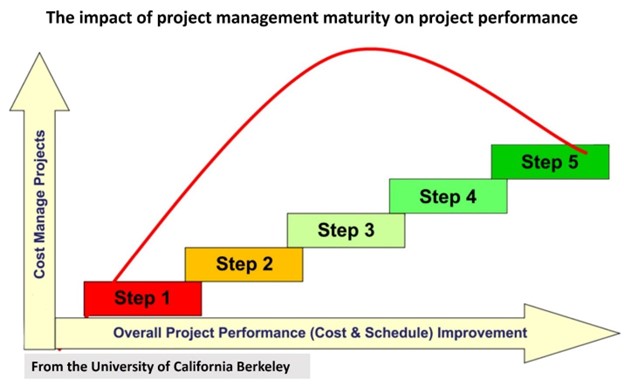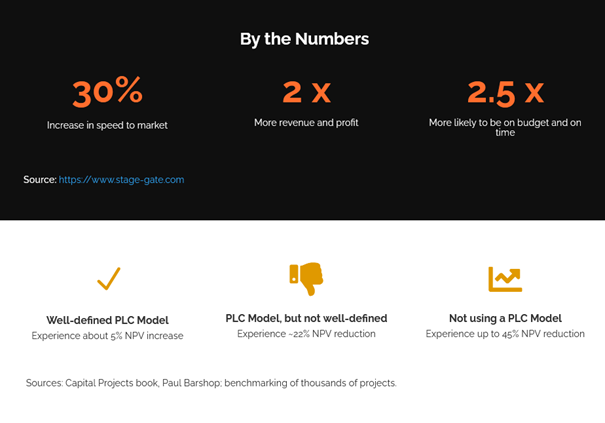Project management challenges
From 2018 to 2019, I conducted intensive research for one of my books. I was under contract for CRC Press to write a book about Megaprojects. Therefore, my research focus was capital projects and megaprojects. These would be significant projects related to building facilities, such as petrochemical plants, power generation, and other large-scale facilities.
I list below some of the critical points from my research findings:
- These types of projects are often significantly behind schedule and over budget.
- The success rate was low; in some cases, the percentage of successful projects was in the single digits.
- A typical (internal) cause was the lack of effective organizational project management systems. If an OPM system existed, it was either in poor condition or weak.
- Consequently, the opportunity losses from these projects were massive, and their legacies were tarnished.
Did project management fail organizations?
Our experience and observations often found that some executives might blame the project management domain as ineffective. Others might blame the project management methodology (often a project life cycle, stage gate model) as bureaucratic, among other reasons. In other words, the “conventional wisdom” was that project management might fail these organizations.
However, based on numerous research, it was clear that project management is not failing these organizations. It was their people. Please note the intent here is not to play the blame game; it is neither healthy nor productive. We can say that, for some reason:
Executives and directors have not trusted, accepted, or recognized the gaps in practice. As a result, they have not identified the need to invest in their organizational project management systems and methods.
What is an organizational project management system?
Simplistically, an organizational project management system often consists of the governance structure, policies, guidelines, procedures, and project management methodology. This is a lengthy discussion, which we cover in more than one video or podcast episode.
What we can say here is that the OPM System must be (a) adaptive, (b) scalable, (c) sustainable, and (d) built with the pillars of processes, people, and technology. The OPM system must include tailored methods for managing projects and programs.
Yes
We can confidently say that competent project management that aligns with a higher level of project management maturity in organizations is a competitive advantage.
This first figure is from a University of California Berkeley study based on the UCB maturity model. In this illustration, “step” is equivalent to “level.” In this illustration, the red line is related to the organizational project management costs.
What the illustration is telling us is the following:
- Project management costs (as a corporate function, the red line) will increase from the starting point to level 3. The primary reason for the increased cost is that the organization would invest in establishing and building its policies, processes, and methods. Further, they invest in training their people and elevating their competence.
- However, once an organization reaches level 3, it should have standardized its organizational project management system and would start to see significantly higher efficiency.
- Beyond that point, with higher competence and maturity, project management would give them a competitive advantage due to a highly efficient practice. In other words, the cost of project management will start to drop.
- The bottom arrow (x-axis) shows the significant cost and schedule improvement on projects. So, it is evident that as the organizational project management maturity increases, organizations can complete projects faster and at lower costs.
- Further, what you cannot see in the illustration but was documented in the study was improved predictability. This means that when the organization estimates the project early, its outcome predictions are significantly enhanced.
- There are other points to make, but we will save for another time.
How about the project management methodology? Does it work?
This next image represents information from two highly credible references:
The first section is an independent analysis of the value of a stage gate model (the project management methodology). The numbers are self-explanatory, and they are significant. This first set of data shows that organizations can increase market speed and significantly enhance their on-budget performance.
The second section of this image is from an IPA book and shows the value of a well-defined process, a PLC model. Once again, the value of a PLC model is evident from the change in the NPV (Net Present Value) of the three conditions shown.
Closing remarks, strategic project management
Project challenges and pain points are common, leading to more failures than successes. However, we also know that a higher level of project management maturity makes a huge difference. Organizations can achieve a higher level of project management maturity when adopting the strategic project management mindset. Subsequently,
Project management can be a competitive advantage.
Project management can be indispensable for business results.
How can UrukPM help?
We can help through our suites of organizational services and solutions, along with the versatile, pioneering, and comprehensive Uruk Platform, truly integrating processes, people, and technology.
Seize Project Success with the UrukPlatform’s functionalities.
Empower your Product Delivery Journey from the idea to the Market!
Try it today! ➡️https://lnkd.in/e8zgji9q




This comment is what we shared on LinkedIn in response to a question:
Let us quantify the UC Berkeley illustration.
At Level 1, let us say a company spends about 5% of the total project cost on project management (managing a project), and projects still end up 20% over budget.
At Level 2, they might spend 4% of the total cost and might reduce the overbudget or delays.
At Level 3, they might reach 3% and deliver most projects close to budget.
So, they will achieve significant savings on each project. Since the organization knows how many projects they do, they can calculate the benefits gained. However, to get to Level 3 from ZERO, they might have to spend $1M to set up the PMO, build the OPM, and train their people. Sooner or later, they will reach the breakeven point (the peak of the red line).
After Level 3, their spending on non-project-related work might drop to $100k (continuous improvement), but they will continue to see a decrease in failure and the cost to manage each project. In other words, most of their projects would be completed within +/- (~5%) of budget and completion date ++++, and the cost to manage each project might drop to 2% or even less.
For the full exchange on LinkedIn, please check this: https://www.linkedin.com/posts/mounirajam_on-this-first-working-day-of-the-new-year-activity-7147949736266711040-fH5f?utm_source=share&utm_medium=member_desktop